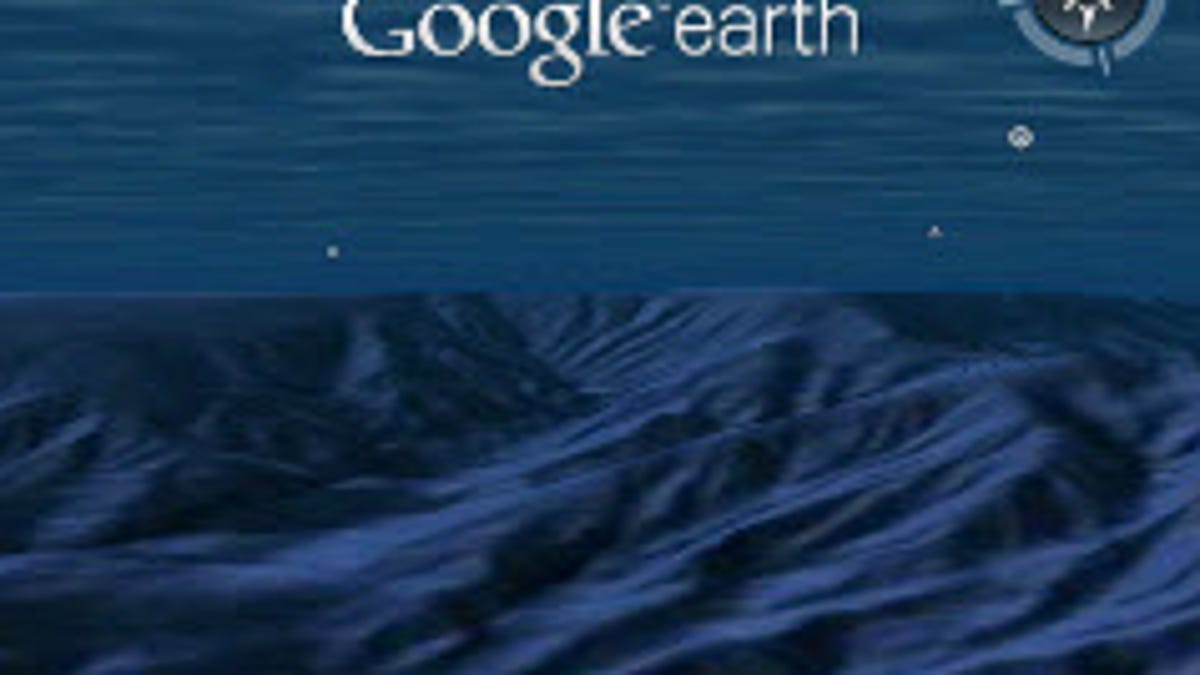Google Earth for Android dives into oceans
The Android version of Google Earth adds a layer to explore the planet's oceans. It also enables two-fingered rotation on a larger number of handsets, and an enhanced look-around gesture on Android 2.2 phones.
Most of the Earth's surface is covered with water, which we land-lubbers have a difficult time exploring on our own. A new update to Google Earth for Android adds an ocean layer to its application for surveying our planet.
The Ocean layer will be switched on by default. To explore the ocean floor, zoom in to just below the ocean surface and tap the "look around" button to take a closer look at undersea dimensions.
We dove underwater to check out the Monterey Bay Canyon that's situated just off the California coastline. Other fissures and mounds on our planet's sea floor are clearly marked, from Hawaii's coasts to the Mariana Trench, Earth's deepest point--though frankly, the picture wasn't clear enough to really plumb its depths.
You can access Wikipedia information within the app where the marker is available, along with photos and videos contributed by other Earth users.
Android 2.2 brings a handful of additional features, including support for Flash video playback within the app, and a way to pan your surroundings with two fingers, instead of tapping the onscreen button. Google Earth for Android is available in the Android Market. It's compatible with Android phones running version 2.1 of the operating system or higher.


